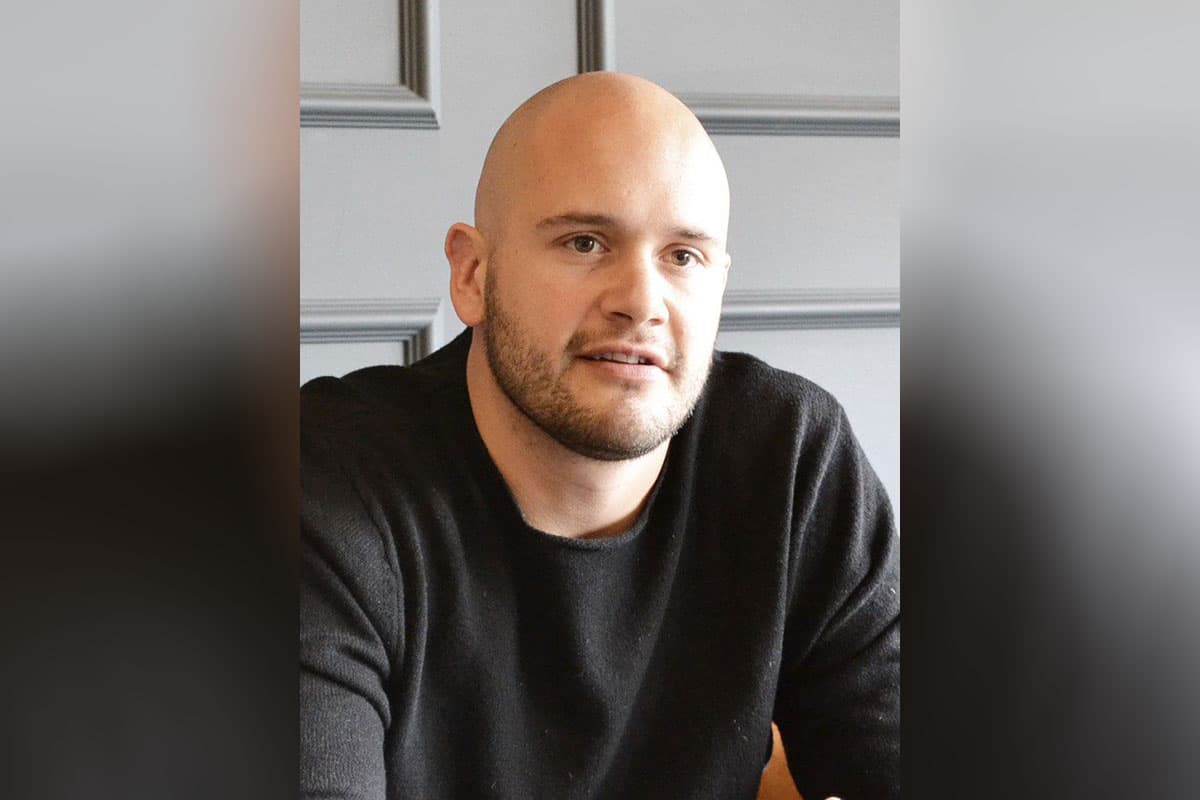Bubba Nicholson is on an epic cannabis adventure across the world’s second-largest country, touring hundreds of licensed recreational marijuana stores in four Canadian provinces in a quest to build brand awareness and glean retail insights.
Nicholson is vice president of business development and ethos at Thrive Cannabis, a privately held cannabis grower and concentrates manufacturer based in Jarvis, Ontario.
His journey – actually, multiple trips crisscrossing Canada – began in Ontario in October 2020 and is still going.
So far, Nicholson says, he’s visited more than 1,230 cannabis stores in four provinces where Thrive products are available to retailers: Ontario, Saskatchewan, Alberta and British Columbia.
Nicholson spoke with MJBizDaily in early September, sharing what he’s learned about Canada’s cannabis retail sector and how that knowledge benefits a producer such as Thrive.
It sounds like this cross-Canada tour is essentially a marketing tour for Thrive Cannabis products.
It started that way. What it’s really become is an ability for a small company like ours to be able to learn the landscape and to be able to pivot.
When I left Ontario, there were 268 stores, and Ontario wasn’t a mature-enough market at that point to handle, say, a 1-gram live resin (vape) cart.
When I got to B.C., the first words out of many retailers’ mouths were, “When’s your 1-gram cart coming?”
The ability to be able to hop on Tuesday’s (Thrive) meeting and say, “Guys, let’s start formulating a 1-gram cart.” … It allows us to really get an understanding of all of the provinces and how things are different.
Everybody tries to paint a province with (the same) brush. What I realized very quickly is, you can’t paint a street corner with a brush in the exact same city.
So we need to develop marketing plans and products that are going to cater to these communities.
I need to be out in that community finding out what’s next, what people want to see next.
I also need to know what people don’t like about our product. Everybody loves to hear the fluffy stuff, but at the end of the day, we don’t have that luxury.
Now I’m getting real, live feedback from the people that are purchasing our products and selling our product and are talking to customers every day. It allows us just to be better.
Was there a single province where you feel that you saw the most vibrant competition between retailers?
Alberta is an interesting market.
There’s a small town in southern Alberta where you will see a (cannabis) retail store with a store in between, and another (cannabis) store with a store in between, and another (cannabis) store.
That’s where you start to see the challenges – I don’t know whether “vibrance” would be the descriptive word at that point.
But then, you also start to see how people have been able to morph out of that.
In those three stores, you have definitely some (stock-keeping units) that are shared between the three stores.
But each one has curated their own menu, they’ve curated their own pricing, and they’ve been able to curate their own vibe.
Everybody in that area was able to (tailor) their experience toward a demographic that they were looking to pinpoint. … Each one gave a different experience.
There’s enough food on the table for all of them to eat.
What kind of price variation have you noticed between stores in a given local market?
In Vancouver, this last trip, I bought a 7-gram (package) of our flower for 66 Canadian dollars ($52) in North Vancouver. And I bought the same 7-gram from the same lot in downtown Vancouver for CA$111.
What does that tell you?
That there’s tons of different businesses, and there’s tons of different clienteles, and there’s tons of different neighborhoods, and again, we can’t paint a province with (the same) brush.
Everybody has different overheads, different expenditures and different (retail) concepts that they’re putting forward. And at the end of the day, some concepts cost more than other concepts.
If they’re able to still sell product at that price, and that’s the formula that they have, then kudos to them – on either side of the fence.
Paint me a picture of what you’re seeing in smaller Canadian towns and cities, in terms of cannabis retail.
What we’re seeing is price alignment, very similar to the provincial stores or the provincial online (e-commerce websites) in those smaller communities.
You’ll see some price compression if you have a few stores in that same small community.
You’ll see a price war going on here and there, but everything tends to sit in and around that same (price) line as the provincial (retailers).
What do you think accounts for that?
It’s really tough to say. I think if we take a look at the margins that the provinces are taking, people in a smaller community don’t necessarily want to be competing with their supplier and they don’t want to be underpriced by their supplier.
During COVID-19, we’ve taught people that you can get absolutely anything online, and the provinces have developed these websites that allow you to do so.
(Small-town retailers) want people to come into the store, they want people to interact. They don’t want people to sit at home and just order their weed through a government website.
To get people in the door, they know that they need to have a (comparable) price to what the province itself is offering.
Is there a single province that you would say is the best place to be a Canadian cannabis retailer right now?
The short answer to that is, no.
There’s places across every province where retailers are going to make money, and putting the right concept into the right area is going to equal success for people.
I would say that less-competitive markets are probably where you would want to be, whether that is a province or whether it’s municipalities inside a province.
I find that the retailers that are struggling are ones that are in provinces where it’s saturated.
Thrive has a farm-gate store, but at the end of the day, you’re a cannabis producer. What can producers learn from visiting retailers like this?
Listen to your retailers.
You can’t sit in your office and come up with things and think that they’re going to work for everybody, because everybody is different.
I think you need to get out there, and you need to meet the retailers, and you need to meet the consumers in-store.
You can look at data all day long … be out there and see the challenges and try (to) get ahead of them.
Find out what people are having a hard time with in the industry and find solutions for it and build partnerships with retailers that are going to help their business.
The definition of a good deal is one that works for both sides. I can’t expect somebody to bring in my cannabis if I’m not willing to work with them to help them build their business.
I think everybody should be out in as many retail locations as humanly possible, supporting those independent (stores) and figuring out how we can help them all succeed.
This interview has been edited for length and clarity.
Solomon Israel can be reached at solomon.israel@mjbizdaily.com.





